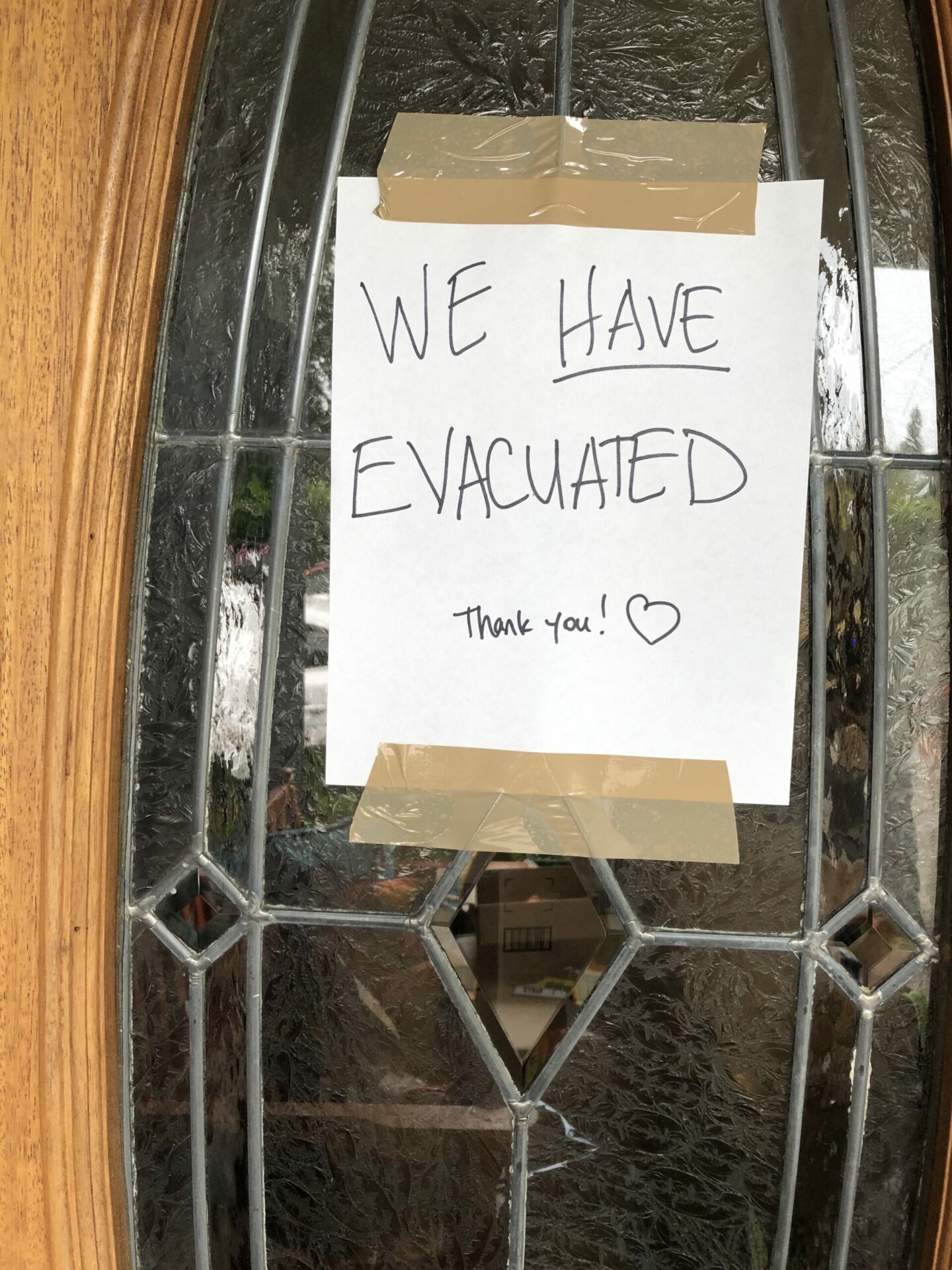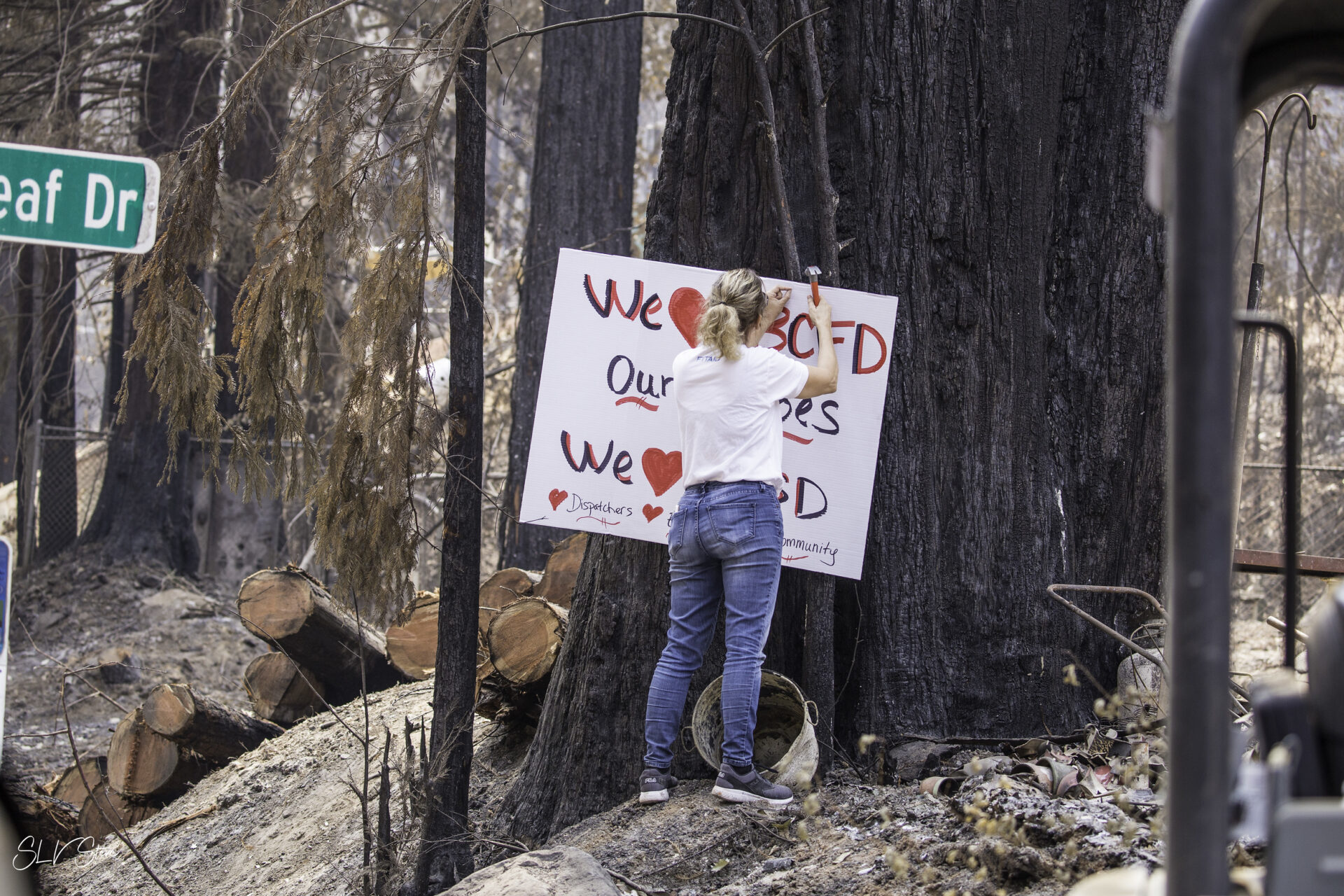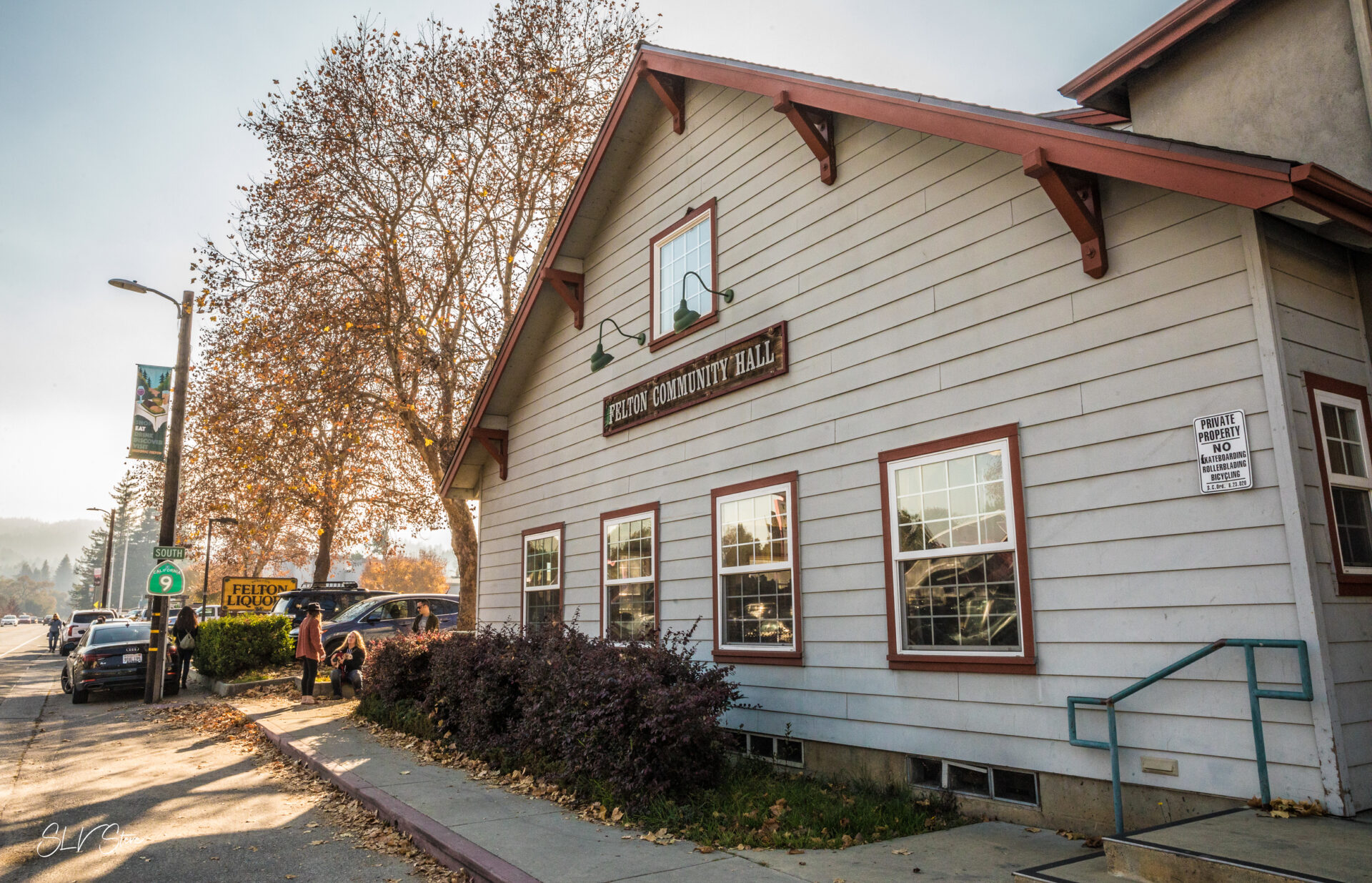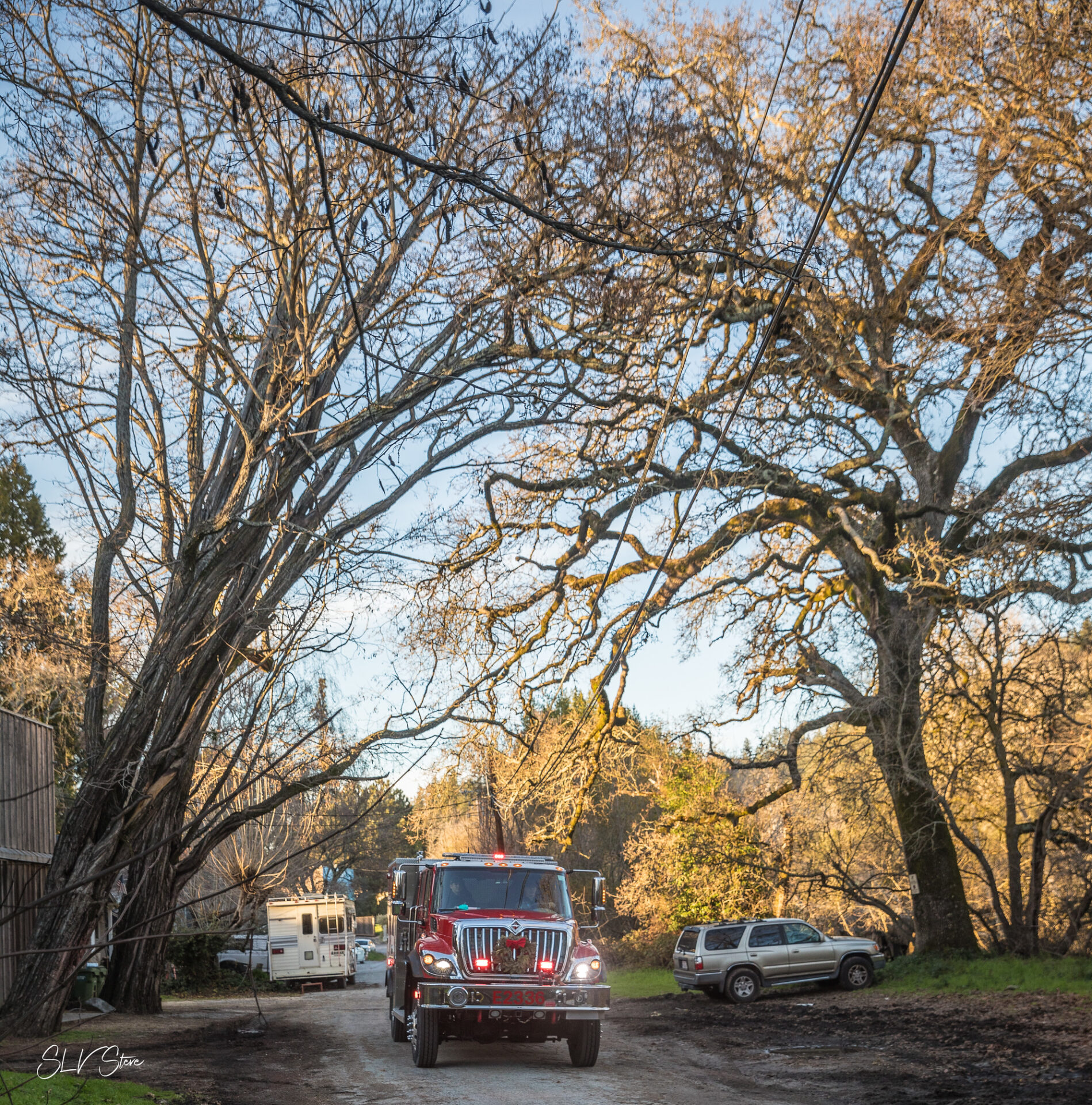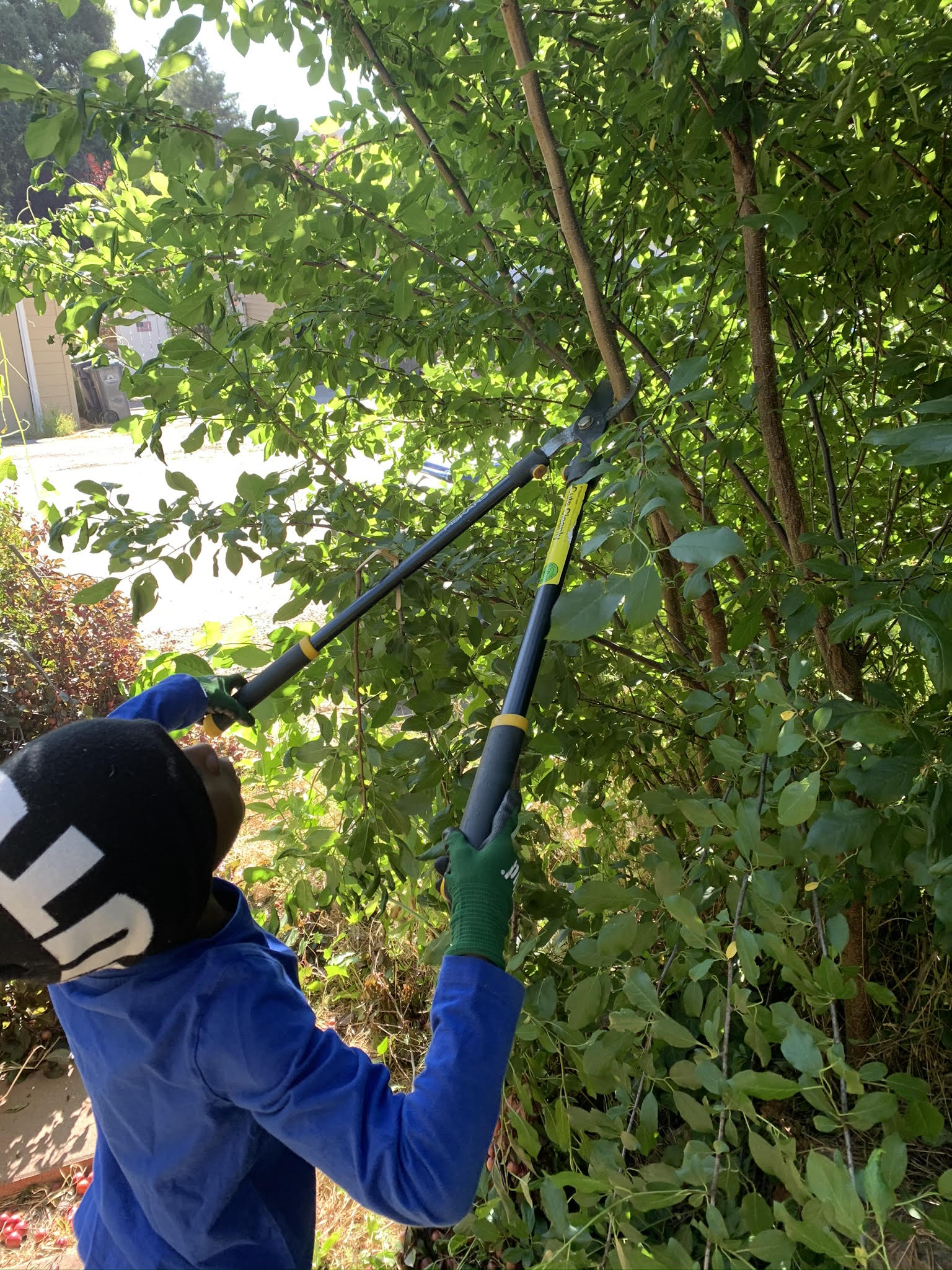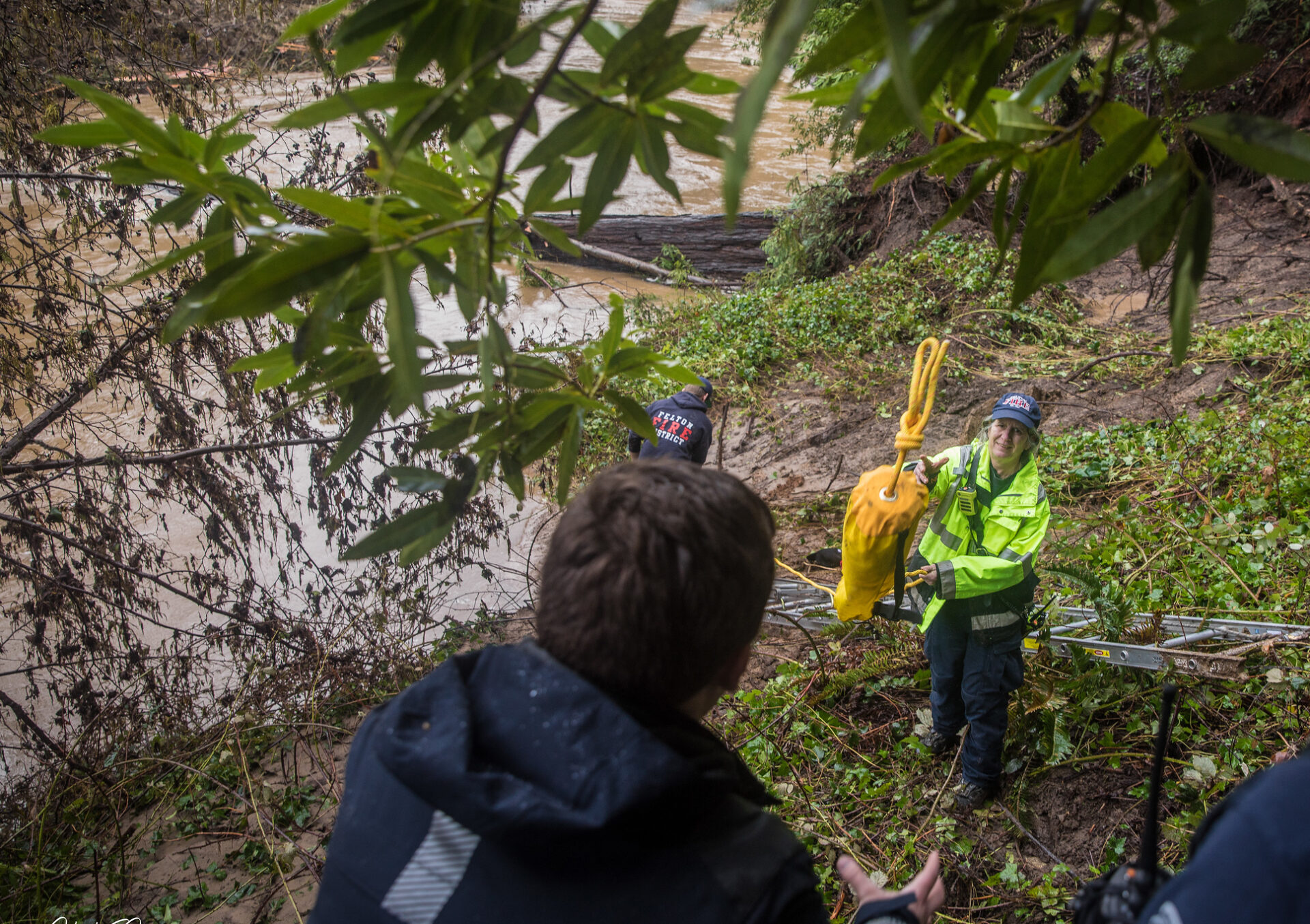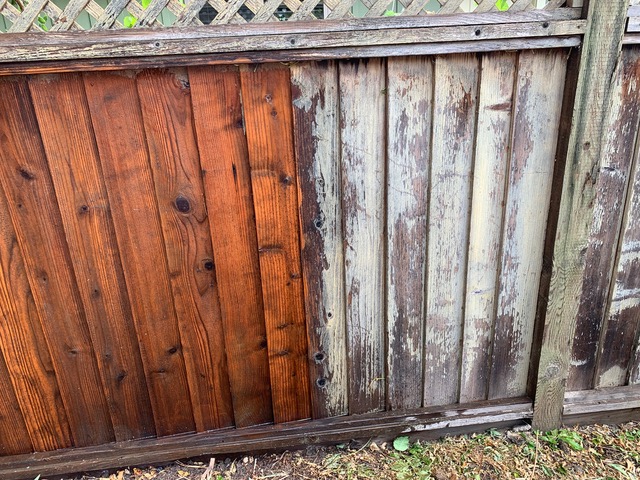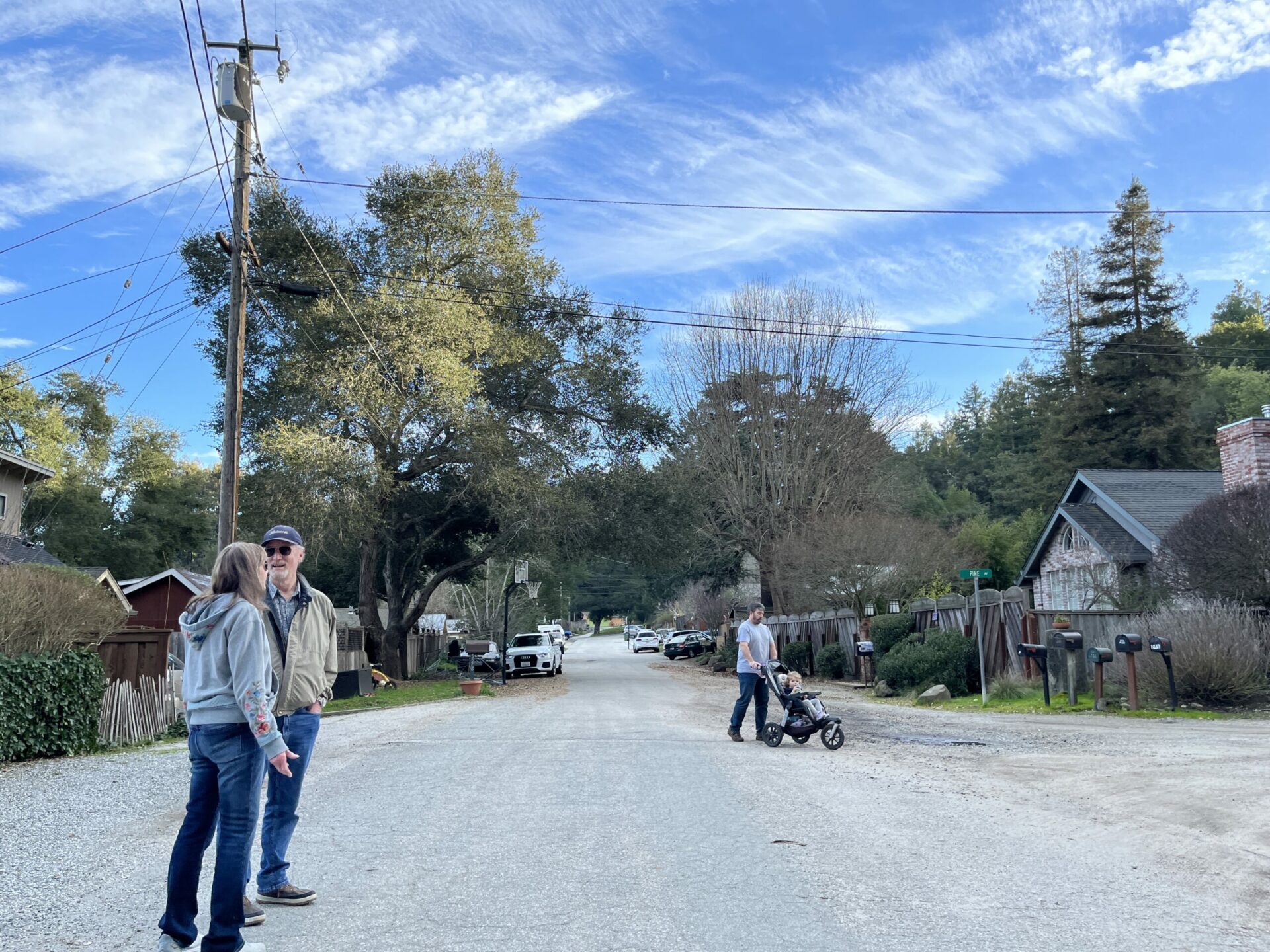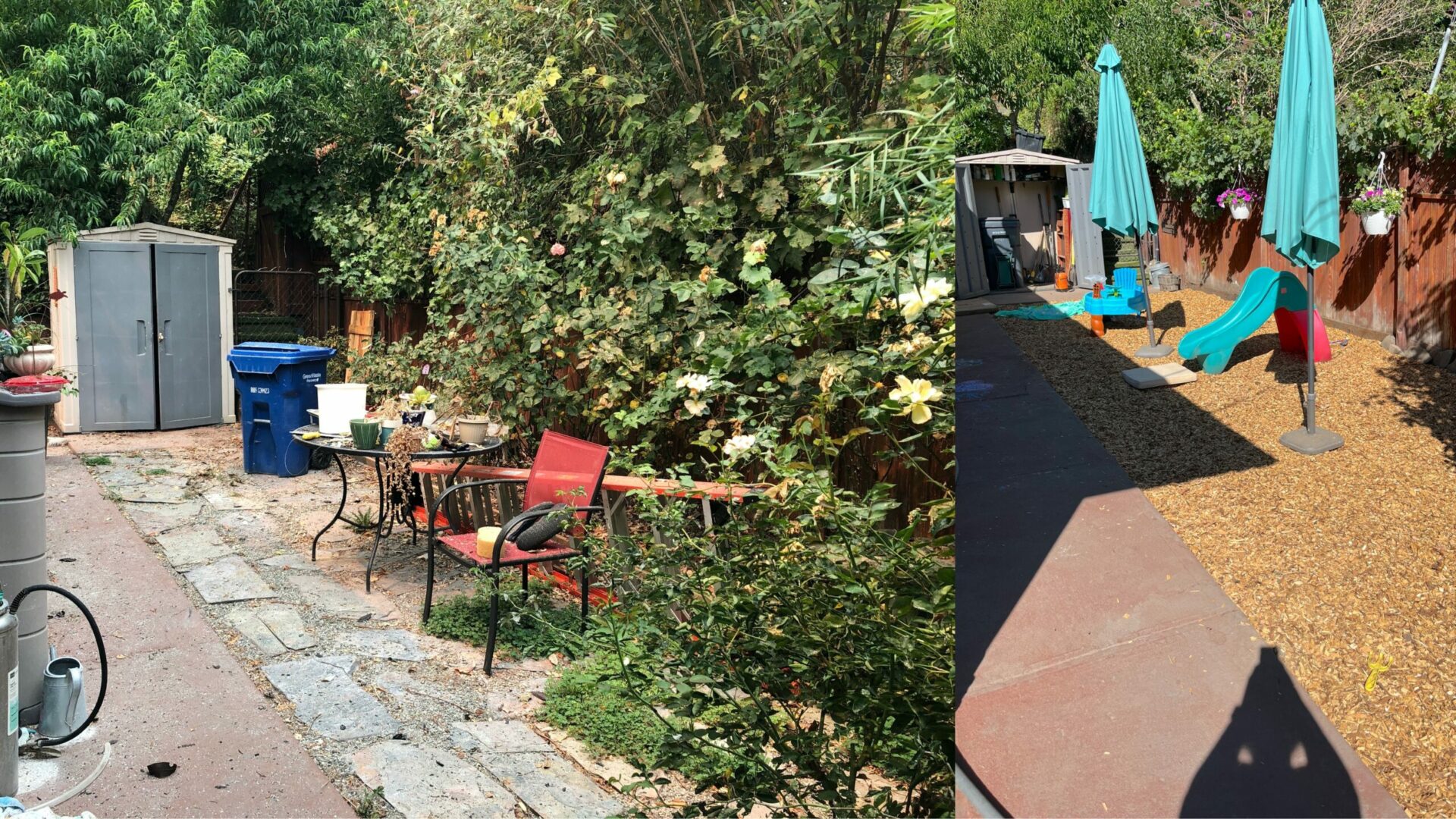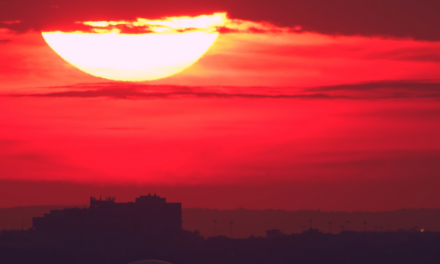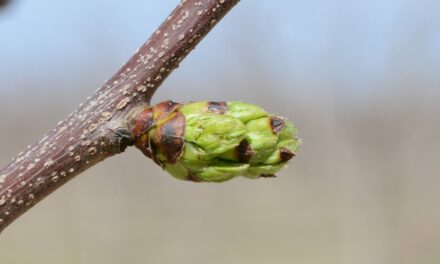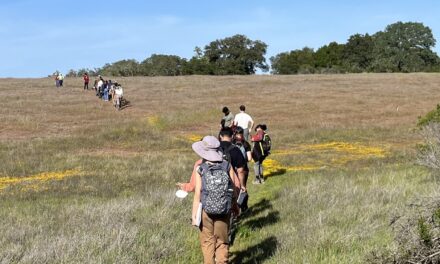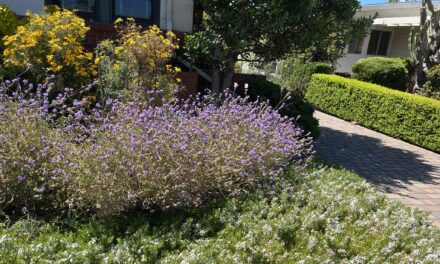My Neighborhood Wised Up to Fire
In August 2020, I received an ominous automated call telling me to leave the area immediately. We were among thousands of residents of the San Lorenzo Valley facing mandatory evacuation from the CZU Lightning Complex wildfire headed our way. When we fled the house in the Santa Cruz mountains that we had been living in for just nine months we knew exactly two of our neighbors. But it’s a bittersweet truth that nothing brings people together like a natural disaster, and our story is no different. Since then, I’ve become part of a community that has wised up to fire. Over the last three years, our neighborhood has hardened homes, cleared vegetation, redone siding, fireproofed fencing, and walked the area with our local fire captain. “It’s a balancing act,” says my neighbor. “We live here in a forest, and we still want to enjoy living here.”
Photo: Kim Hickok.
Extremes-in-3D
A five-part series of stories in which KneeDeep Times explores the science behind climate extremes in California, and how people and places react and adapt.
Supported by the CO2 Foundation and Pulitzer Center.
FULL READ
My Neighborhood Wised Up to Fire
In August 2020, when the CZU Lightning Complex Fires threatened our neighborhood and forced my husband and I to flee the house we had been living in for only nine months – our first home – we knew exactly two of our neighbors. But it’s a bittersweet truth that nothing brings people together like a natural disaster, and our story is no different.
It was the middle of August and the persistent smell of smoke was a sour cherry on top of a three day heatwave. Like many of the homes in the Santa Cruz Mountains, ours didn’t have air conditioning, so we remained as motionless as possible, melting into the couch as our fans provided minimal relief while blowing smoke up our noses.
The smoke only annoyed us, at first. Then the ash falling from the sky concerned us.
“I was absolutely terrified,” says my neighbor, Clara Elliot, who I hadn’t met before the fires. The ash rain grew heavier by the hour and the smoke started making us cough. Elliot says her husband assured her that “redwoods can’t burn,” and the “firefighters were taking care of it,” but she stayed up late packing their car in case they needed to evacuate at a moment’s notice.
EXTREMES-IN-3D
A five-part series of stories in which KneeDeep Times explores the science behind climate extremes in California, and how people and places react and adapt.
Series Home
Click here to enter
Supported by the CO2 Foundation and Pulitzer Center.
The next day, I received an ominous automated call telling me to leave the area immediately. We were among thousands of residents of the San Lorenzo Valley facing mandatory evacuation from the wildfire headed our way.
Wildfire reached within a half mile of our neighborhood of 55 homes, but all were spared. Thousands of others in the Santa Cruz Mountains weren’t as lucky. The CZU Complex Fire burned 86,509 acres, destroyed nearly 1,500 structures and damaged 140 more.
After two weeks, my neighbors and I returned home and began cleaning up the ash and smoke damage while we counted our blessings and faced the reality of just how close our homes were to burning down. “Nobody – myself included – was prepared for that,” says Eric Rice, another neighbor who I didn’t meet until after the fire.
Rice, a retired corrections counselor, spent nearly two decades managing firefighting crews in burning areas around the state, but had never seen a fire as volatile as the CZU. It was also the first time he had witnessed a wildfire end. “And the end isn’t even the end,” he says. “The end is just the containment of the fire. But there’s a new reality that starts when it’s all over. That was an eye opener for me.”
A well-known hub in this small community in coastal mountains above Santa Cruz. Photo: Steve Kuehl.
Learning What You Can Do to be Fire Safe
Cynthia Dzendzel has lived in the Tanglewood neighborhood of Felton – my neighborhood – since 1984. She witnessed the tragedy and recovery from the 1989 earthquake, but this was the first time a wildfire threatened her home. When she returned from her two weeks of evacuation in August 2020, she immediately started talking with neighbors about how to prepare for fire in the future. As a self-described “research-oriented person,” Dzendzel attended a virtual meeting of the Resource Conservation District of Santa Cruz County, where she learned about the National Fire Protection Association (NFPA) and their Firewise USA program, often just called “Firewise.”
Firewise is cosponsored by the US Forest Service, the U.S. Department of the Interior, and the National Association of State Foresters. Elliot, who now serves as our neighborhood’s Firewise community leader, describes it as “a community driven program to help get people involved in making their neighborhoods more fire aware and fire safe.” The program launched in 2002 with 12 pilot neighborhoods, and now recognizes nearly 1,000 Firewise communities across 40 states.
On many local roads there isn’t much room to maneuver. Photo: Steve Kuehl.
By the last week of October 2020, Dzendzel and her long-time neighbor, Lea Watson, recruited and formed a neighborhood committee of six residents, myself included, who were interested in helping lead the effort to become a Firewise-recognized neighborhood. I went from being the newest resident in the neighborhood, and knowing hardly anyone, to being part of a community with a common goal.
But we didn’t get very far with our efforts before the next crisis hit.
By November 2020, when the first rains reached our fire-scarred area, “our attention turned from fire to debris flows, and we used our Firewise contact list to let neighbors know about hazard zones” in our area, Dzendzel explains. It wasn’t until March that we finally felt we had the bandwidth to resume our Firewise efforts.
That spring, we organized our first ever walk-through of the neighborhood with our local fire captain, Audrey Dawson, who gave us tips on fire preparedness. As a 20-year fire service veteran, Dawson is glad to see more and more neighborhoods in our area take advantage of the Firewise program. “It’s been around for a long time, but nobody really cared for many years,” she says. “They thought, ‘Oh, redwood trees don’t burn, why would I worry about that?’”
The kids pitch in with clearing brush. Photo: Clara Elliot.
But as the CZU fire confirmed, redwoods do burn, and residents like us who still had a home standing were now eager to learn how to protect it from fire in the future.
On our walk, Dawson pointed out several things I had never thought of, like where the fire truck would or wouldn’t fit, why we should use reflective address numbers, and how to properly store wood. I hadn’t realized how incredibly reassuring it would be to have a firefighter walk the neighborhood with us and point out what she liked and didn’t like in terms of fire safety. She was happy to help us, too.
Firewise is not only a great way for homeowners to learn about fire preparedness, Dawson says, but it’s also “an excuse to get neighbors to talk with each other, and I think that is even more valuable than making your property defensible.”
Dawson also reminded us that although preparing for fire is important, we shouldn’t aim to infiltrate our beautiful redwood forest with pads of concrete and gravel.
“It’s a balancing act. We live here in a forest, and we still want to enjoy living [here],” echoes Elliot. “With that comes risk, and we just have to decide what our acceptable risk is.”
Having Community Keeps Us Motivated
According to Elliot, about 80% of our neighbors are involved and find Firewise to be a worthwhile effort. “Over the last three years, our neighborhood put in close to $25,000 worth of investment in terms of home hardening, vegetation clearing, planting new things, keeping things neat and tidy, roof redos, siding redone, fireproofing fence lines,” Elliot says. “It’s been quite impressive.”
Fire-resistant stain for fencing. Photo: Cynthia Dzendzel
Even more impressive is the fact we’ve accomplished this while under a deluge of other challenges over the past three years – from the pandemic to debris flows and flooding. (Indeed, as I write this, our neighborhood is without power for the third time in as many days because high winds toppled two rain-soaked redwoods, crushing one neighbor’s car and pulling down so many power lines that it yanked a meter right off a nearby house.)
“People are really tired and burned out from feeling like they have to do something, and they just want to live their lives and not worry about the next fire or the next disaster,” Elliot says. “As the Firewise leader, I’m aware that I can’t ask for more when people are really just trying to survive day-to-day most of the time.”
Nonetheless, our neighborhood remains motivated to maintain our Firewise standing. “Every household needs to contribute at least $29 worth of investment toward becoming Firewise recognized, and that can be anything from clearing brush for an hour or hiring someone to clear brush for you or putting in new air vents, or painting fire retardant on fences,” she explains. “In our neighborhood, on average, people were contributing $200 instead of $29. So there’s obviously an investment there, and that’s fabulous.”
Hickok’s sideyard before and after Firewise improvements. Photo: Kim Hickok.
At my house, for example, we hired a small crew to help us remove several trailer-loads of small trees and brush that hugged the house. Through Firewise, we learned that maintaining a defensible space around our home, free of wood, brush and other flammable items, lessens the chance that our house catches on fire from nearby embers or direct flames, and provides room for firefighters to protect our house. Also because of Firewise, my husband and I now know more than two of our neighbors.
“There’s nothing bad about Firewise,” Dawson says. “Anything that brings people together like that, and then having a common goal, is a great thing.”
![]() Find out what happened next.
Find out what happened next.
The story has a follow up! Staying Firewise Post CZU: Feb 2025.
EXTREMES-IN-3D
SERIES CREDITS
Managing Editor: Ariel Rubissow Okamoto
Web Story Design: Vanessa Lee & Tony Hale
Science advisors: Alexander Gershunov, Patrick Barnard, Richelle Tanner
Series supported by the CO2 Foundation.
Special thanks for Neighborhood Wise Up
Steve Kuehl for being present with his camera when it matters, including for the banner photo in this story.






